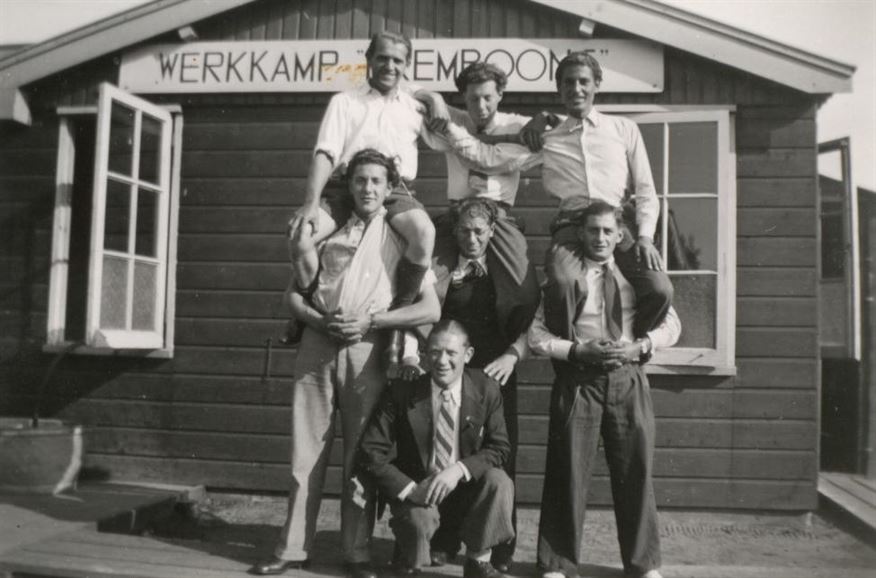First residents
One of the first residents of the refugee camp near Westerbork was Werner Bloch. ‘The further we came, the more lonesome it became. At one point, all you could see was heathland. Bushes every now and then. And where the refugee camp would be erected, there was an enormous, wide plain where there was just heath and sand, which was very desolate.’
The first residents were put to work straightaway. The barracks were there, but a lot had to happen to the interior. Though it may have been fairly warm and dry inside, outside it was rough and muddy.
Because the central kitchen was everything but central, it was impossible to serve hot meals actually hot. These kinds of circumstances did not make camp life more pleasant. From camp farm De Schattenberg, new land was supposed to be quarried. Those who weren’t used to heavy work, felt in their backs, arms, and hands what it was like to dig up heathland with a shovel. Digging was necessary to start up a high-performing mixed business that would be able to feed the entire camp. But it didn’t look like that in the near future. The farm under construction wasn’t profitable by a long shot.
Due to the isolated location of the camp, residents were mostly dependent on each other. Initially, the camp was sparsely populated. On 9 October 1939, the first 22 refugees arrived. At the end of January 1940, there were 167. From February 1940, the number increased more rapidly: by the end of April, Westerbork housed 749 refugees already. Little had come from the promises of education and recreation. More and more, the residents experienced their accommodation as a concentration camp. A lot of unrest about whatever the Nazis were planning grew. With fearful eyes, they looked at the map of the Netherlands, and saw that Westerbork was not far from Germany.





